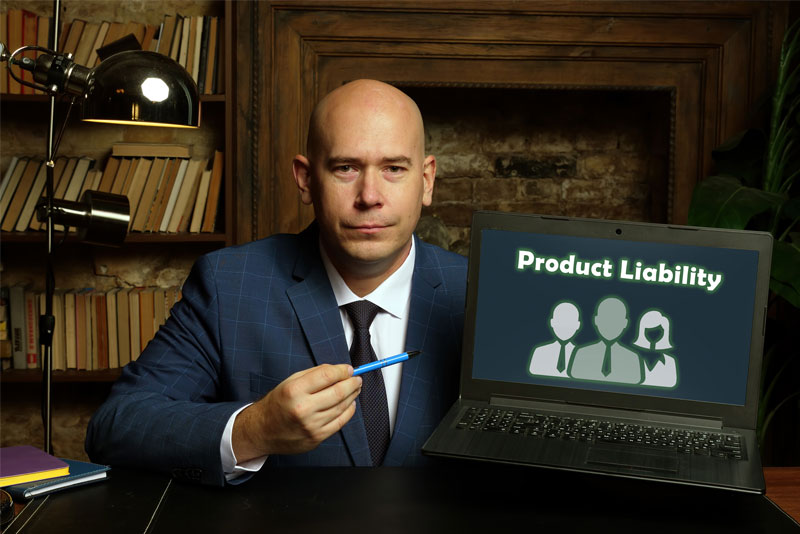People use any number of products in their day-to-day life assuming they are safe and effective. However, certain defective products can cause serious injuries or even death and this gives rise to product liability lawsuits. People who get injured by defective or dangerous products have the option to file a product liability action to safeguard their legal rights and obtain compensation. Products that cause injuries include defective drugs, defective machinery, a malfunctioning car part, and defective medical devices among others. Proving that a defective product has directly caused the injury requires strong evidence alongside each step of a carefully constructed argument. Product liability attorneys need to prove that a product was defective in its nature like – in its design, or manufacturing, and that the manufacturer failed to warn users regarding the possible risks involved. To prove the extent of injury caused by the defective product, the plaintiff’s medical records need to be reviewed. For this, attorneys rely on medical record review services as it speeds up the medical record collection and review process.
Understanding Three Types of Defective Product Claims
Understanding the different types of defective product claims in detail will help determine whether the plaintiff’s claim is valid in all respects. When it comes to proving defective product claims, it is not only important to show the product was defective, but that the defect caused serious injuries. Typically, defective product claims fall into three different categories–
- Defective Design – In this category, the product’s design is inherently dangerous or flawed. Some of the common examples of a design defect include –
- A type of sunglasses that fail to protect the eyes from ultraviolet rays
- A particular model of car that has a tendency to flip over while turning a corner
- A line of electric blankets that can electrocute the user when turned on high
In the above examples, the injury must have been caused by the defective design. For instance, if a person accidentally crashes into another vehicle while driving one of the flip-prone cars mentioned above, a plaintiff can have a design defect claim only if they can prove that they crashed the vehicle as it was in the process of flipping over while turning.
- Defective Manufacture – One of the most common types of product liability claims, these defects occur during the manufacturing phase. In this category, the product was designed properly, but the defect occurred during the manufacturing phase such as a problem that occurred at the factory where it was fabricated.
- Failure to Provide Adequate Warnings or Instructions – In this category, the product is otherwise safe, but the manufacturer failed to warn of a specific danger associated with the use of the product that was known or reasonably knowable to the manufacturer. Failure-to-warn claims typically involve a product that is dangerous in a way that’s not known or clear to the user or that requires the user to exercise special precautions or diligence when using it. Some of the common examples of a failure-to-warn claim include –
- A cough syrup that does not include on its label a warning that it may cause dangerous side effects if taken in combination with another commonly taken drug
- An electric tea kettle that is packaged without sufficient warning concerning its oddly positioned steam valve
- A corrosive paint-removing chemical that is sold without adequate instructions for safe handling and usage
In all the above-mentioned examples, the injury must result from the failure to warn or properly instruct. For instance, in the example of the tea kettle, a person can only argue for failure-to-warn claim, if he/she got burned by steam unexpectedly coming out of the oddly positioned steam valve.
Proving a Product Liability Claim – Key Aspects
Proving a product liability claim requires proving that the product was defective, that the defect caused the injuries, and that the product was not altered in any significant way. It is important to establish that the defect was already present at the time the product left the possession of the product manufacturer/supplier/retailer. As long as a plaintiff used the product in accordance with the specific instructions or in the way a reasonable person would, proving the claim and winning the compensation for the damages suffered will be possible.
In a defective product claim, there are several elements that must be proved and these include –
- The Product Was Defective – A personal injury attorney must prove the existence of a defect in the product. This involves proving that there was a fault either in the designing or manufacturing stage of the product. Also, it is important to show that the product came without adequate warnings, instructions or labels to prevent the accident that caused the injury. Noticeable defects – say for instance – a hole in a car’s airbags – can be easy to prove. However, there may not be any grounds for a claim if the reasonable use of the product comes with dangers. For instance, if a person cut his/her hand with a knife, this does not necessarily mean that the knife is defective. In certain cases, however, a lack of instructions or safety warnings can justify a product liability claim. The flaw in a product can be easily proved through expert testimony. An expert or other qualified person can testify regarding a particular product’s safety.
- Loss of Property, Injury or Death – A plaintiff cannot file and win a product liability case just by being hurt or having a close call. To become fully eligible for damages, it is important to show that the product has been the direct cause of the loss of property, injury, or death. The attorney must provide evidence of injury, death, or property loss to demonstrate the existence of the defect, such as medical records, police reports, and eye witness testimonies.
- Product Was Used as Intended – One key aspect is proving that the claimant was not actually responsible for the product’s defect or their own injury. In other words, it is important to prove the claimant used the product as the manufacturer intended. In certain cases, the manufacturer could claim that the plaintiff did not use the product as it was meant to be used.
- Financial or Emotional Loss – It is crucial to show that the defective product not only caused personal injury, but that the harm in some way caused financial or emotional loss – whether that’s due to lost wages, medical costs, or pain and suffering.
- Breach of Warranty – A breach of warranty occurs when the seller or manufacturer makes a promise to the consumer about the product and that promise is broken at a later stage, which leads to injury and harm for the user. Warranties are usually provided verbally or in writing, or they can be implied. Proving the breach of warranty on the part of sellers or manufacturers can help in proving the claim.
- Retain Valuable Evidence – To prove or investigate the defect, it is important to retain the evidence of the defective product itself. In certain cases, products may get destroyed during the accident and this could make it more difficult to prove the case. On the other hand, if the claimant has the product in his/her possession, it becomes easier to meet the burden of proof in court.
- Collecting Punitive Damages – Under State laws, there may be certain restrictions that could make it difficult to prove punitive damages. In such cases, the plaintiff needs to prove that the manufacturer acted with actual malice towards them, or displayed a conscious disregard for the health and safety of others.
Proving the above key aspects requires critical evidence to back them up. Critical evidence include – the defective product itself, evidence that the manufacturer had knowledge of the defect (such as emails or memos), photos and videos of injuries, the defect or the incident, accident reports, medical bills and payroll records, bystander and expert witnesses, labels and other marketing materials.
The time limit to file a defective product claim may vary with each state law. In some states the time limit begins on the date of the injury whereas in some others it doesn’t start until the injury is discovered or should have been discovered. The recovery of damages for product liability cases depends on several factors such as the severity of the injury, State laws and so on. Typically, the plaintiff may be able to recover economic damages such as medical expenses and loss of income.
Preparing for a product liability case can be quite challenging. This will require availing an attorney’s expertise from the beginning, to ensure all relevant evidence and potential claims are preserved. Attorneys need to review large volume medical records to extract key medical evidence to support the case. A detailed medical record analysis helps establish the nature and extent of the injury caused by the defective product. It is important to prove that a defect existed in the product (either during the designing or manufacturing stage) and that defect caused the injury. Product liability medical record review services provided by experienced medical review companies can help attorneys meet their medical record review and documentation requirements.
Disclaimer: The content in this article has been sourced from reliable internet resources and is intended as informative material only. For a professional opinion in this regard, consult a product liability attorney.




